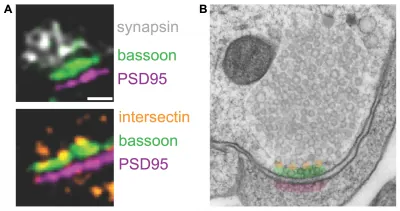
Breakthrough Discovery: Protein Intersectin Revealed as Key Player in Brain Cell Communication
2025-07-30
Author: Jia
In an astonishing revelation from researchers at Johns Hopkins Medicine, scientists have unveiled crucial insights regarding a protein known as intersectin, which plays a pivotal role in the communication between brain cells. This groundbreaking discovery could reshape our understanding of memory formation and learning in the mammalian brain.
Intersectin: The Protein That Keeps Messages Flowing
On July 8, a crucial study published in Nature Neuroscience highlighted intersectin's unique function in managing when and how message-carrying bubbles, known as synaptic vesicles, are prepared for release between brain cells. This ability to maintain the correct positioning of these bubbles could pave the way for advancements in treating cognitive disorders, including Alzheimer’s, Down syndrome, and Huntington’s disease.
How Do Brain Cells Communicate?
The process of transferring messages from one brain cell to another is fundamental for learning and memory. The synapse, the junction between two neurons, is typically home to around 300 synaptic vesicles, yet only a select few of them are utilized for communication at any given moment. The challenge has always been determining how synapses know which vesicles to activate.
Dr. Shigeki Watanabe, the lead researcher, reveals, “These tiny bubbles have a distinct domain where they prefer to be, enabling the brain to manage their release efficiently.” This discovery sheds light on a hitherto perplexing mechanism within our brain.
A Closer Look at Endocytosis
Initially, the research team investigated endocytosis—the process of recycling synaptic vesicles. To explore intersectin’s role, they created genetically modified mice lacking the gene for intersectin and expected significant disruption in neuronal communication. Surprisingly, this absence did not halt endocytosis, prompting researchers to refine their approach.
Visualizing the Unseen: Electron Microscopy Insights
Utilizing high-resolution techniques, researchers observed intersectin’s localization in synapses. They discovered that intersectin effectively creates a barrier that separates vesicles destined for communication from those that are not. Further investigations using advanced electron microscopy revealed that without intersectin, the vital vesicles were unable to reach the release zones necessary for neurotransmission.
Replenishing Vesicles: A Millisecond Challenge
The team utilized cutting-edge zap and freeze microscopy to analyze the rapid movements of synaptic vesicles, capturing dramatic interactions on a millisecond scale. Normal mice exhibited quick replenishment of vesicles, while those lacking intersectin or related proteins showed a marked delay—a critical finding, as efficient neurotransmission relies on this swift action.
What's Next for Research?
The ongoing research aims to decipher how intersectin facilitates the transport of new vesicles to the vital release sites in the synapses. By further exploring this essential protein, scientists hope to unlock new therapeutic avenues for cognitive impairments.
With funding from institutions like the National Institutes of Health and collaboration from various research bodies, this study marks a significant milestone in neuroscience, promising to enhance our understanding of brain function and paving the way for innovative treatments in the future.



 Brasil (PT)
Brasil (PT)
 Canada (EN)
Canada (EN)
 Chile (ES)
Chile (ES)
 Česko (CS)
Česko (CS)
 대한민국 (KO)
대한민국 (KO)
 España (ES)
España (ES)
 France (FR)
France (FR)
 Hong Kong (EN)
Hong Kong (EN)
 Italia (IT)
Italia (IT)
 日本 (JA)
日本 (JA)
 Magyarország (HU)
Magyarország (HU)
 Norge (NO)
Norge (NO)
 Polska (PL)
Polska (PL)
 Schweiz (DE)
Schweiz (DE)
 Singapore (EN)
Singapore (EN)
 Sverige (SV)
Sverige (SV)
 Suomi (FI)
Suomi (FI)
 Türkiye (TR)
Türkiye (TR)
 الإمارات العربية المتحدة (AR)
الإمارات العربية المتحدة (AR)